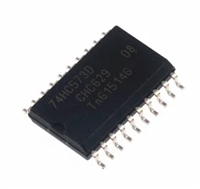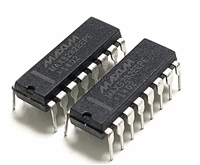Dual Independent Timer mode—Generates system tim-
ing signals or counts occurrences of external events.
Single Input Capture and Single Timer mode—Provides
one external event counter and one system timer.
3.8
TRIPLE CLOCK AND RESET
The Triple Clock and Reset module generates a high-speed
main System Clock from an external crystal network. It also
provides the main system reset signal and a power-on reset
function.
3.11
VERSATILE TIMER UNIT
This module generates a slow System Clock (32.768 kHz)
from an optional external crystal network. The Slow Clock is
used for operating the device in power-save mode. The
32.768 kHz external crystal network is optional, because
the low speed System Clock can be derived from the high-
speed clock by a prescaler.
The Versatile Timer Unit (VTU) module contains four inde-
pendent timer subsystems, each operating in either dual 8-
bit PWM configuration, as a single 16-bit PWM timer, or a
16-bit counter with two input capture channels. Each of the
four timer subsystems offer an 8-bit clock prescaler to ac-
commodate a wide range of frequencies.
Also, two independent clocks divided down from the high
speed clock are available on output pins.
3.12
TIMING AND WATCHDOG MODULE
The Timing and Watchdog Module (TWM) contains a Real-
Time timer and a Watchdog unit. The Real-Time Clock Tim-
ing function can be used to generate periodic real-time
based system interrupts. The timer output is one of 16 in-
puts to the Multi-Input-Wake-Up module which can be used
to exit from a power-saving mode. The Watchdog unit is de-
signed to detect the application program getting stuck in an
infinite loop resulting in loss of program control or “runaway”
programs. When the watchdog triggers, it resets the device.
The TWM is clocked by the low-speed System Clock.
The Triple Clock and Reset module provides the clock sig-
nals required for the operation of the various CP3UB17 on-
chip modules. From external crystal networks, it generates
the Main Clock, which can be scaled up to 24 MHz from an
external 12 MHz input clock, and a 32.768 kHz secondary
System Clock. The 12 MHz external clock is primarily used
as the reference frequency for the on-chip PLL. Also the
clock for modules which require a fixed clock rate (e.g. the
PCM/CVSD transcoder) is generated through prescalers
from the 12 MHz clock. The PLL generates the input clock
for the USB node and may be used to drive the high-speed
System Clock through a prescaler. Alternatively, the high
speed System Clock can be derived directly from the 12
MHz Main Clock.
3.13
UART
The UART supports a wide range of programmable baud
rates and data formats, parity generation, and several error
detection schemes. The baud rate is generated on-chip, un-
der software control.
In addition, this module generates the device reset by using
reset input signals coming from an external reset and vari-
ous on-chip modules.
The UART offers a wake-up condition from the power-save
mode using the Multi-Input Wake-Up module.
3.9
POWER MANAGEMENT
3.14
MICROWIRE/SPI
The Power Management Module (PMM) improves the effi-
ciency of the device by changing the operating mode and
power consumption to match the required level of activity.
The Microwire/SPI (MWSPI) interface module supports syn-
chronous serial communications with other devices that
conform to Microwire or Serial Peripheral Interface (SPI)
specifications. It supports 8-bit and 16-bit data transfers.
The device can operate in any of four power modes:
Active—The device operates at full speed using the high-
frequency clock. All device functions are fully operation-
al.
Power Save—The device operates at reduced speed us-
ing the Slow Clock. The CPU and some modules can
continue to operate at this low speed.
The Microwire interface allows several devices to communi-
cate over a single system consisting of four wires: serial in,
serial out, shift clock, and slave enable. At any given time,
the Microwire interface operates as the master or a slave.
The Microwire interface supports the full set of slave select
for multi-slave implementation.
Idle—The device is inactive except for the Power Man-
agement Module and Timing and Watchdog Module,
which continue to operate using the Slow Clock.
Halt—The device is inactive but still retains its internal
state (RAM and register contents).
In master mode, the shift clock is generated on chip under
software control. In slave mode, a wake-up out of power-
save mode is triggered using the Multi-Input Wake-Up mod-
ule.
3.15
ACCESS.BUS INTERFACE
3.10
MULTI-FUNCTION TIMER
The ACCESS.bus interface module (ACB) is a two-wire se-
rial interface with the ACCESS.bus physical layer. It is also
compatible with Intel’s System Management Bus (SMBus)
and Philips’ I2C bus. The ACB module can be configured as
a bus master or slave, and can maintain bidirectional com-
munications with both multiple master and slave devices.
The Multi-Function Timer (MFT) module contains a pair of
16-bit timer/counter registers. Each timer/counter unit can
be configured to operate in any of the following modes:
Processor-Independent Pulse Width Modulation (PWM)
mode—Generates pulses of a specified width and duty
cycle and provides a general-purpose timer/counter.
Dual Input Capture mode—Measures the elapsed time
between occurrences of external event and provides a
general-purpose timer/counter.
The ACCESS.bus receiver can trigger a wake-up condition
out of the low-power modes using the Multi-Input Wake-Up
module.
5
www.national.com






 深入解析AD7606高性能多通道模数转换器:资料手册参数分析
深入解析AD7606高性能多通道模数转换器:资料手册参数分析

 74HC573三态非易失锁存器(Latch)资料手册参数分析
74HC573三态非易失锁存器(Latch)资料手册参数分析

 MAX3232 RS-232电平转换器资料手册参数分析
MAX3232 RS-232电平转换器资料手册参数分析

 MAX485 RS-485/RS-422收发器资料手册参数分析
MAX485 RS-485/RS-422收发器资料手册参数分析
